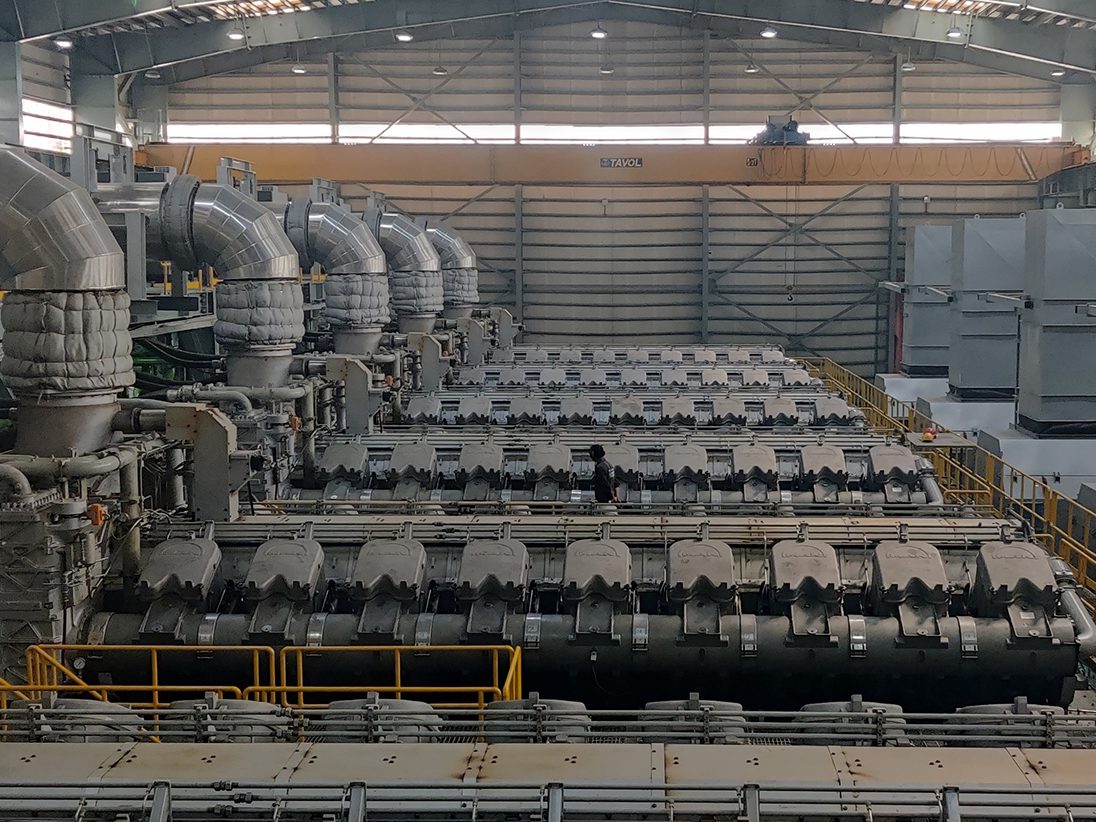How One Fossil Fuel Is Poised for Growth as the World Transitions to Net Zero
Credit to Author: Aaron Larson| Date: Thu, 01 Sep 2022 04:14:00 +0000

Most power companies have carbon reduction goals. Often, reaching those goals involves transitioning from coal-fired generation to renewable energy such as solar and wind.
However, it’s not always practical to go straight from a coal-heavy fleet to a renewable-filled portfolio without jeopardizing reliability. That’s why many companies are transitioning from coal to gas to reduce emissions, while continuing to add renewable resources as well.
Lower Emissions with Natural Gas
Gas-fired generation releases much less CO2 than coal per unit of electricity produced. There are a couple of reasons for this: gas has less carbon content per unit of energy than coal and gas generation is generally more efficient than coal generation.
The U.S. Energy Information Administration (EIA) says coal consumption for electricity generation produces on average about 209 pounds of CO2/MMBtu, compared to 117 pounds of CO2/MMBtu for natural gas. Meanwhile, the average heat rate for U.S. coal units is about 10,655 Btu/kWh of generation; whereas, the average gas unit heat rate is 7,732 Btu/kWh. If you do the math, coal releases about 2,227 pounds of CO2/MWh. Gas, on the other hand, releases less than half that—roughly 905 pounds of CO2/MWh.
Gas Engines and Turbines Provide Reliability and Flexibility
As power companies implement decarbonization plans, many turn to gas-fired generation for baseload and peaking capacity because renewable resources are intermittent. Both turbines and engines are reliable and flexible, and either technology can be used to complement renewables.
While the largest heavy-duty gas turbines have much greater capacity than the largest engines, owners can install multiple engines to create a total station capacity that meets their needs. For example, MAN Energy Solutions recently announced that it will supply nine MAN 18V48/60TS engines with a total capacity of 150 MW for a new power plant in Sreepur, Bangladesh. The company has also commissioned three other power plants in Bangladesh in the cities of Chandpur, Thakurgaon (Figure 1), and Narayanganj. The Chandpur plant includes two MAN 20V45/60, which the company claims is the most powerful four-stroke engine in the world with an output of about 26 MW per engine. It also has respectable efficiency numbers, with a fuel utilization of more than 50%.

“Our customers value the efficiency, reliability, and resilience of our technology,” Ghassan Saab, head of Power Plant Sales for the Middle-East Africa region with MAN Energy Solutions, said in a press release announcing the project. The fact that additional engines can be fairly easily added to existing sites means owners can plan for future demand growth without having to invest immediately in capacity that is unneeded initially. This allows great flexibility and doesn’t tie owners’ hands if projections are ultimately incorrect or other options become more economical down the road.
Growth in Gas Generation Predicted
“Natural gas will be a very big part of the clean energy transition, partly because of the flexibility,” Philip Moeller, executive vice president for the Business Operations Group with Edison Electric Institute (EEI), said on July 22 during a virtual press briefing on the future of natural gas, which was sponsored by the United States Energy Association (USEA). Moeller said several studies suggest more natural gas will be used in the future than is being used today as the world moves toward net zero carbon emissions. He specifically mentioned analysis conducted by the Electric Power Research Institute in association with GTI Inc., which was presented at the National Association of Regulatory Utility Commissioners (NARUC) Summer Policy Summit in San Diego, California, on July 18.
Moeller explained that the study involved a model going out to 2050, which aims to understand what is necessary to get to net zero by then. “They project that natural gas will actually be used more,” he said. “Again, there’ll be some blending, perhaps with hydrogen, perhaps with renewable natural gas. Batteries will play a part. We’re working closely with the administration—with the infrastructure bill—to really tackle long-term storage, whether that’s molten salt or some other technologies, batteries will play a role, but longer-term storage will be necessary. It’s still being worked on, and hence again, looking at their models, natural gas will play a major part of getting to net zero by 2050.”
The EIA agrees. In the key takeaways from the Reference case and side cases in its Annual Energy Outlook 2022 report, released in March, the agency said, “Petroleum and natural gas remain the most-consumed sources of energy in the United States through 2050, but renewable energy is the fastest growing.” The EIA is quick to point out that it is not predicting what will happen, but rather, it reports “modeled projections of what may happen given certain assumptions and methodologies.” It says the Reference case “represents EIA’s best assessment of how U.S. and world energy markets will operate through 2050, based on key assumptions intended to provide a baseline for exploring long-term trends.”
The Gas Exporting Countries Forum (GECF) also agrees. In its Global Gas Outlook 2050 Synopsis (GGO), GECF said, “Natural gas will increase its share in the global energy mix from over 23% today to 27% in 2050, becoming an important pillar of decarbonisation and sustainable development.” In his foreword to the report, HE Eng. Mohamed Hamel, secretary general of the GECF, wrote, “The key take-away of this new edition of the GGO is quite straightforward: natural gas will play a pivotal role in alleviating energy poverty, fuelling economic growth, improving living standards and expanding prosperity, whilst contributing to the protection of the environment. In short, natural gas is the energy for sustainable development.”
—Aaron Larson is POWER’s executive editor.
The post How One Fossil Fuel Is Poised for Growth as the World Transitions to Net Zero appeared first on POWER Magazine.